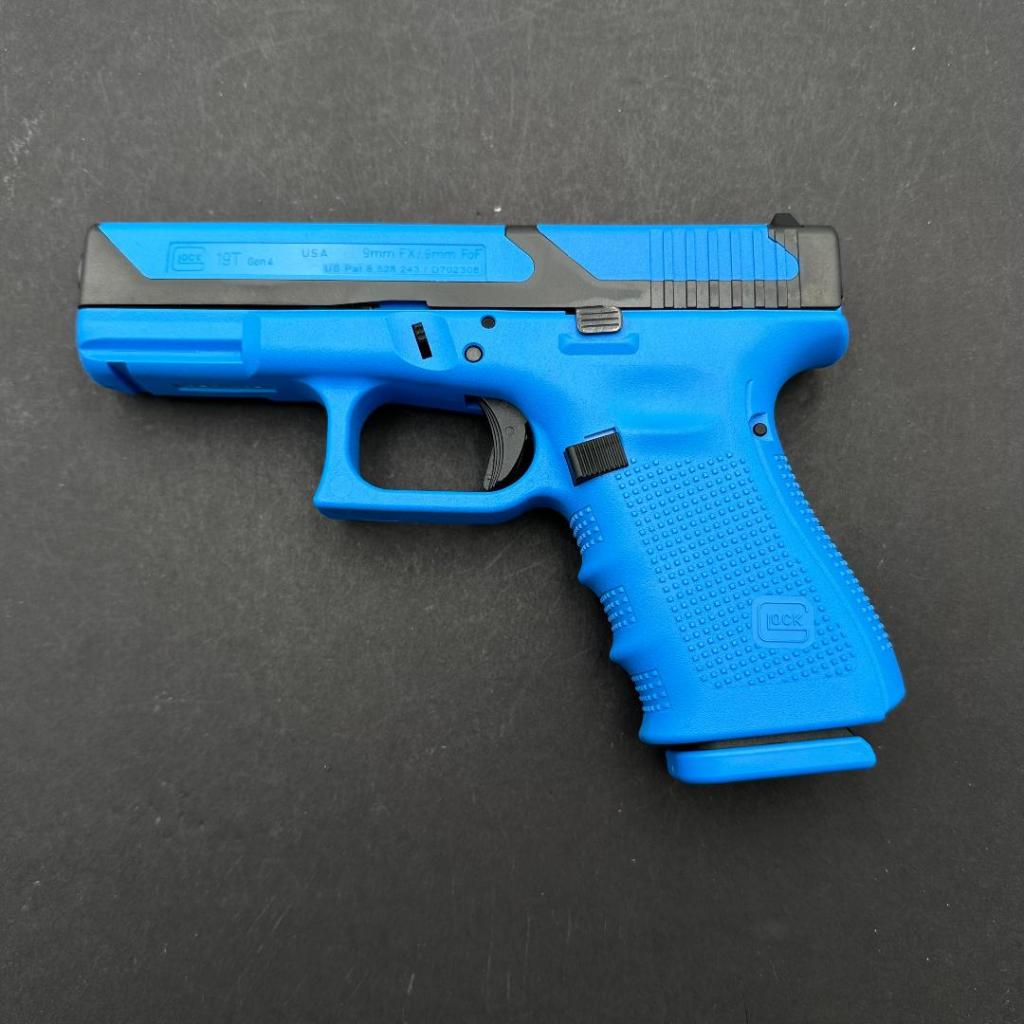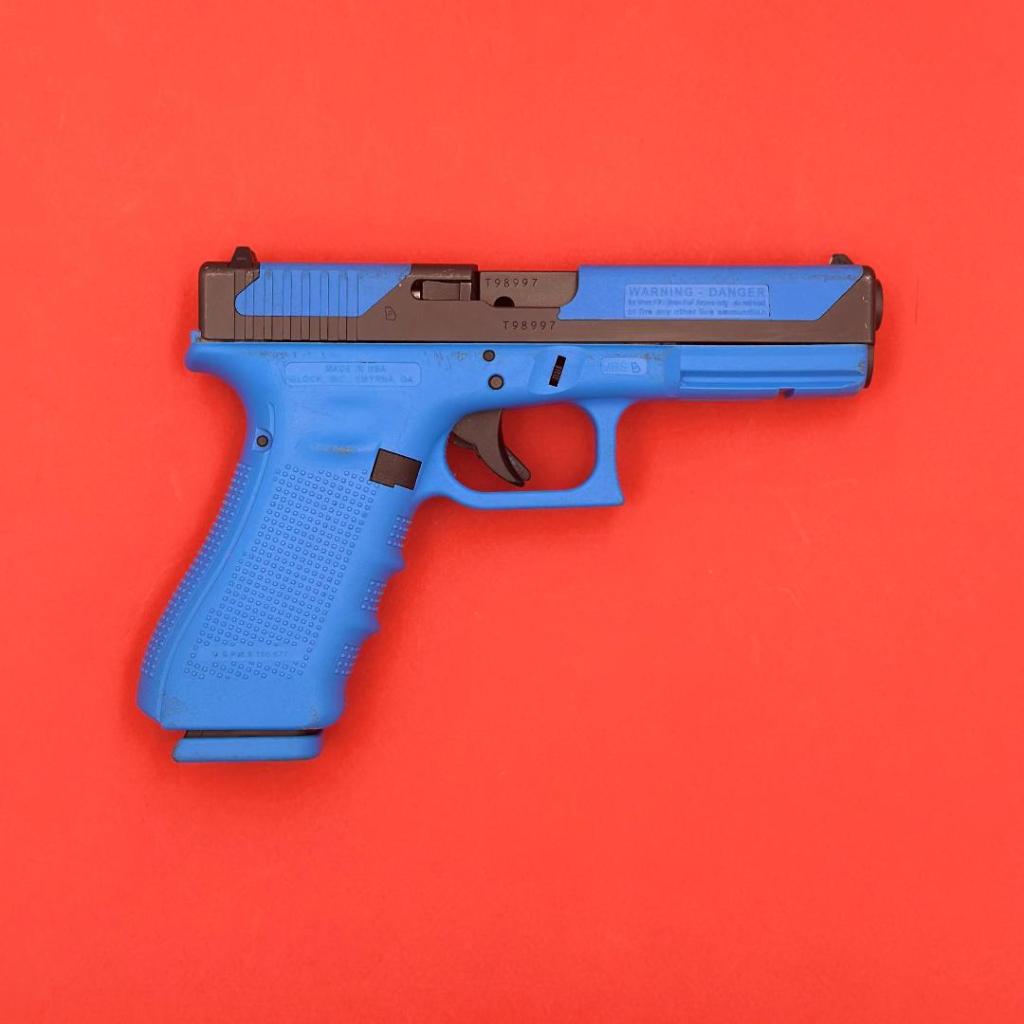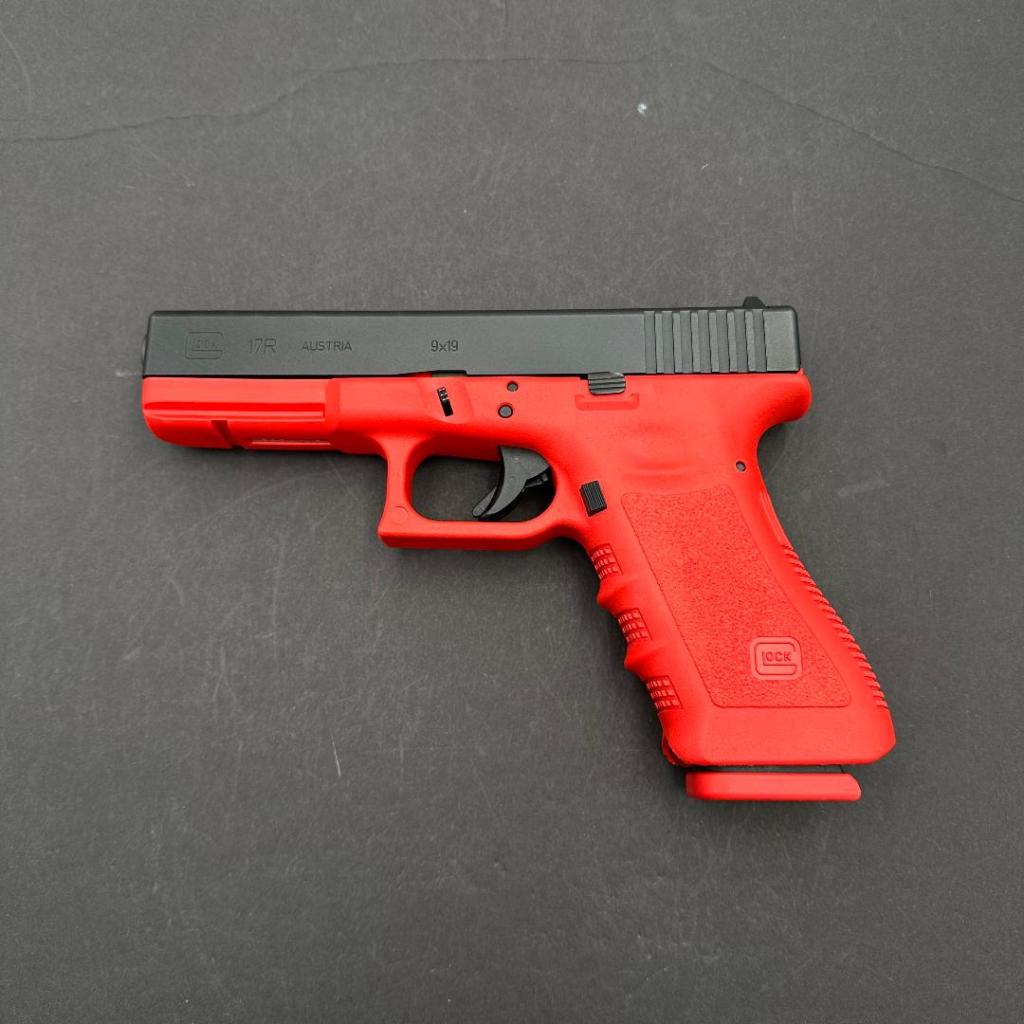
Over in the rare Glock section of the website, there is a post about the rainbow of Glock colors. While the company makes at least seven factory frame colors: Black, Gray, Battlefield Green, OD Green, Flat Dark Earth, Red, and Blue, the last two are much harder for the average person to get their hands on.
The red and blue frames are reserved for training guns and Glock’s company policy has always been to only allow sales to official law enforcement or other government agencies. No explanation has ever been provided for why the average citizen is prohibited from training with a firearm, but luckily, there is no legal reason why citizens can’t own such weapons here in the US.
As police upgrade their service weapons, these training models frequently get an upgrade as well so that they match the same platform and generation design that the officers are carrying and that’s when these training models can legally be sold to the general public. What is especially cool is that the trainers aren’t usually used as often as the service weapons so they’re often in excellent condition. I’ve even found some that appear to be as-new on the secondary market (which doesn’t give me great confidence in department training regimens, but that’s a whole other topic).
Red frames are available in two major categories: P and R models, but that is just scratching the surface when it comes to these guns. The first variants were made with Gen 2 frames and they have been built clear up to Gen 5s and also the FBI T-models (an especially rare variant). The P models are inert, but fully functional outside of the firing pin being truncated and no hole cut in the breech face (to prevent insertion of a real firing pin). The slide cycles rounds and it’s primary purpose is for retention drills and other instances where it would be unsafe to handle a live weapon. The R models are the same basic design but with the addition of a spring loaded trigger that will automatically reset without the slide needing to be cycled.
More than just a variation in generation or model number, there is also an unknown number of small design changes–especially with barrels. Variants have been made with standard barrels all the way to completely solid blanks with many different types of holes cut out in between. This is an area of collecting that really has not been explored or tabulated other than the models that are known to exist so there is still opportunity for uncovering many hidden gems here.
The blue frames have been around since about 1996 with the introduction of the 17T. Aftermarket conversion kits had been built to convert a normal 17 to fire simmunition rounds. Frequently, the departments were painted blue to distinguish them as training models and that was the inspiration for Glock’s blue frame. These models are used for force on force training with live fire paintballs or rubber rounds. Various calibers have also been made, with the rarest of these being an air cartridge “7.8×21 AC.” The T models are also still relatively un-explored corner of the collector hobby as well.
The following table is the currently know variants–those that have been personally verified, not just internet photos–and I have not attempted to expand the chart for the smaller variants beyond generation and model. This is likely a very conservative chart but is 100% verified. Calibers are listed, though from a practical standpoint, this is irrelevant for P and R models:
| Generation | Model | Caliber |
| 2 | 17T | 9mmFX |
| 2 | 23P | .40 SW |
| 3 | 17R | 9×19 |
| 3 | 17P | 9×19 |
| 3 | 17T | 9mmFX |
| 3 | 17T | 7.8×21 AC |
| 3 | 22P | .40 |
| 3 | 23P | .40 |
| 4 | 17P | 9×19 |
| 4 | 17R | 9×19 |
| 4 | 17T | 9mmFX |
| 4 | 17T | UTM |
| 4 | 19T | 9mmFX |
| 4 | 19T | UTM |
| 4 | 22P | .40 |
| 5 | 17T | 9mmFX |
| 5 | 22P | .40 |
| T | 17TM | 9mmFX |
| T | 17PM | 9×19 |
| T | 19TM | 9mmFX |

